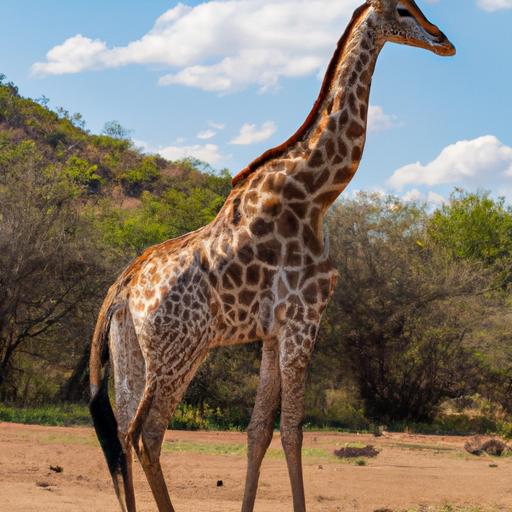Hedgehogs have long captured our hearts with their endearing appearance and unique spiky coats. But have you ever wondered about their place in the animal kingdom? what are hedgehogs related to? Join me on this exciting journey as we unravel the mysteries surrounding these delightful creatures and discover their fascinating evolutionary connections.
A Brief Overview of Hedgehogs
Let’s begin our exploration with a brief overview of hedgehogs. These small mammals belong to the class Mammalia, making them distant relatives of other beloved creatures such as cats, dogs, and elephants. Hedgehogs are characterized by their quills, which are modified hairs that cover their backs and protect them from predators. They come in various species, including the well-known European hedgehog and the African pygmy hedgehog, each with its own unique traits and habitats.
Curiosity About Hedgehogs’ Relationship to Other Animals
Now, let’s dive deeper into the intriguing question: what are hedgehogs related to? Understanding their evolutionary history and genetic connections can shed light on their distinct characteristics and behaviors. By exploring their taxonomy and examining their closest relatives, we can gain a better grasp of hedgehogs’ place in the animal kingdom.
As we embark on this adventure, let your imagination wander. Picture hedgehogs as detectives, searching for clues to their lineage. We’ll uncover fascinating links to other spiky creatures, debunk misconceptions, and reveal surprising connections that might leave you astonished.
Stay tuned as we delve into the taxonomy of hedgehogs and trace their evolutionary journey. Get ready to explore the intriguing world of these prickly yet lovable creatures, and prepare to have your mind blown by the incredible relationships they share with other animals. So, let’s dive in and unravel the mysteries of what hedgehogs are truly related to!
Taxonomy of Hedgehogs
Classifying Hedgehogs in the Animal Kingdom
To truly comprehend the relationships hedgehogs have with other animals, we must first understand their classification within the animal kingdom. Hedgehogs belong to the class Mammalia, which encompasses a diverse range of warm-blooded vertebrates. This class includes familiar creatures like lions, whales, and bats, highlighting the wide array of species hedgehogs are associated with.
Identifying Hedgehogs’ Order and Family
Moving further into the intricate web of taxonomy, let’s explore the order and family to which hedgehogs belong. Hedgehogs are classified under the order Erinaceomorpha, which consists solely of hedgehogs and their closest relatives. This order is characterized by their spiky quills, a defining feature that sets them apart from other mammals.
Within the order Erinaceomorpha, hedgehogs are further categorized into the family Erinaceidae. This family includes not only hedgehogs but also other spiny creatures such as moonrats and gymnures. Despite their distinct appearances, these animals share common characteristics and evolutionary traits, making them part of the same family tree.
Understanding the Genus and Species of Hedgehogs
Finally, let’s zoom in on the genus and species of hedgehogs, which helps us differentiate between various hedgehog species. The most well-known hedgehog species is the European hedgehog (scientific name: Erinaceus europaeus), found across Europe and parts of Asia. Additionally, we have the African pygmy hedgehog (scientific name: Atelerix albiventris), a popular pet choice due to its compact size and gentle temperament.
Understanding the taxonomy of hedgehogs provides us with a solid foundation for exploring their evolutionary connections. As we continue our investigation, we’ll uncover the intriguing history behind hedgehogs and their remarkable journey through time. So, let’s continue on this captivating expedition as we dive into the evolutionary history of these enchanting spiky creatures.
Evolutionary History of Hedgehogs
Hedgehogs, like many other creatures, have a rich and intriguing evolutionary history that stretches back millions of years. In this section, we will embark on a journey through time, exploring the ancient ancestors of hedgehogs, tracing their evolutionary path, and uncovering the remarkable adaptations and characteristics that make them unique.
Examining Hedgehogs’ Ancient Ancestors
To understand the evolutionary origins of hedgehogs, we must delve into their ancient ancestors. Fossil evidence suggests that hedgehogs have been around for over 15 million years, with their roots tracing back to the Eocene epoch. These early hedgehog-like creatures, known as Erinaceidae, were smaller in size compared to their modern counterparts but displayed similar traits such as protective spines and omnivorous diets.
Tracing the Evolutionary Path of Hedgehogs
Over time, hedgehogs underwent various changes and adaptations, allowing them to thrive in diverse environments across the globe. As they dispersed into different regions, they evolved into different species, each suited to their specific habitats. For instance, the European hedgehog (Erinaceus europaeus) adapted to the woodlands and grasslands of Europe, while the African pygmy hedgehog (Atelerix albiventris) adapted to the savannas of Africa.
Notable Adaptations and Characteristics of Hedgehogs
Hedgehogs possess several remarkable adaptations and characteristics that have contributed to their survival and success. Their most iconic feature, their spines, acts as a formidable defense mechanism against predators. When threatened, hedgehogs curl up into a tight ball, exposing their spines in a magnificent display of protection.
Moreover, hedgehogs have developed acute senses, including excellent hearing and a keen sense of smell, which aid them in foraging for food and detecting potential dangers. Their diet primarily consists of insects, small invertebrates, and occasionally, fruits and vegetation.
In addition to their physical adaptations, hedgehogs possess unique behaviors, such as hibernation during colder months to conserve energy and survive harsh conditions.
As we uncover the evolutionary history of hedgehogs, it becomes evident that these spiky creatures have not only adapted to their environments but also developed fascinating traits that have contributed to their survival over millions of years. Join me in the next section as we explore the closest relatives of hedgehogs and unravel the web of connections within the animal kingdom.
Closest Relatives of Hedgehogs
A. Exploring the Immediate Family of Hedgehogs
To uncover the closest relatives of hedgehogs, we must first delve into their immediate family. Hedgehogs belong to the Erinaceidae family, which includes other spiny mammals such as moonrats, gymnures, and even the enigmatic moonrat. These fascinating creatures share similar physical characteristics and lifestyles, making them part of an exclusive spiky club.
But what sets hedgehogs apart from their family members? While hedgehogs possess quills covering their backs, their relatives exhibit variations in their spines. Moonrats, for instance, have shorter and softer spines, while gymnures possess bristles instead of true quills. Exploring the diversity within their immediate family allows us to appreciate the unique adaptations and evolutionary paths hedgehogs have taken.
B. Highlighting Shared Features with Other Mammals
Beyond their immediate family, hedgehogs also share remarkable features with other mammals. They belong to the larger order Erinaceomorpha, which includes not only their spiky relatives but also the intriguing moonrats. These animals exhibit common characteristics such as a typical mammalian body structure, warm-bloodedness, and the ability to nurse their young.
Among these shared features is the presence of vibrissae, also known as whiskers. Hedgehogs, along with other members of the Erinaceomorpha order, possess specialized whiskers that aid in navigating their surroundings, especially in low-light conditions. It’s remarkable to think about how these seemingly simple yet crucial features connect hedgehogs to a larger network of mammalian species.
C. Identifying Hedgehogs’ Mammalian Relatives
As we continue our exploration, we find that hedgehogs’ mammalian relatives extend beyond the spiky creatures we’ve discussed. These adorable creatures are part of the larger superorder Laurasiatheria, which encompasses various mammalian groups, including ungulates like horses and rhinos, carnivores like dogs and cats, and even cetaceans like dolphins and whales.
While these connections might seem surprising, they highlight the intricate web of evolution and genetic relationships that exist among different animal groups. Though hedgehogs may not share immediate common ancestors with these diverse mammals, their position within the Laurasiatheria superorder emphasizes the vast interconnectedness of life on Earth.
In the next section, we will unravel the distinctions between hedgehogs and other spiny creatures, such as porcupines, echidnas, and tenrecs. Prepare to be amazed by the incredible diversity and adaptations found in the world of spines!
Hedgehogs vs. Other Spiny Creatures
Spiky exteriors are not exclusive to hedgehogs. In this section, we will explore the distinctive features of hedgehogs and their comparisons to other spiny creatures, such as porcupines, echidnas, and tenrecs. Prepare to dive into a world of prickly wonders!
Distinguishing Hedgehogs from Porcupines
Hedgehogs and porcupines may both possess quills, but they have distinct differences that set them apart. While hedgehogs are smaller in size and have spines that are shorter and more flexible, porcupines boast longer, sharper quills. Additionally, hedgehogs are known for their ability to roll into a tight ball when threatened, effectively protecting their vulnerable underbellies with their spines. Porcupines, on the other hand, rely on their quills to deter predators by embedding them into their attackers’ skin.
Comparing Hedgehogs to Echidnas and Tenrecs
Beyond the hedgehog-porcupine dichotomy, there are other fascinating spiny creatures to explore. Echidnas, also known as spiny anteaters, share similarities with hedgehogs. They both possess spines and have a diet primarily consisting of insects. However, echidnas are not closely related to hedgehogs genetically. These incredible creatures belong to a different family altogether and are native to Australia and New Guinea.
Another intriguing spiny mammal is the tenrec. Found in Madagascar and parts of Africa, tenrecs exhibit diverse adaptations and are often mistaken for hedgehogs due to their spiky appearance. However, unlike hedgehogs, tenrecs are not closely related to them. Tenrecs have a unique evolutionary history, and some species even possess venomous saliva, making them truly remarkable creatures.
Understanding the Similarities and Differences Among Spiny Animals
As we explore the realm of spiny animals, it becomes evident that while they may share certain features, each species possesses its own distinct characteristics and evolutionary paths. Hedgehogs, porcupines, echidnas, and tenrecs have all evolved their spiky defenses independently, adapting to their specific environments in remarkable ways.
By understanding the similarities and differences among these spiny animals, we gain a deeper appreciation for the wonders of nature. So, let’s continue our exploration and uncover more captivating facts about these intriguing creatures in the upcoming sections of our journey.
Conclusion
In conclusion, we have embarked on a captivating journey to unravel the mysteries surrounding hedgehogs’ relationships with other animals. Through exploring their taxonomy, evolutionary history, and closest relatives, we have gained a deeper understanding of these adorable spiky creatures.
From our investigation, we have discovered that hedgehogs belong to the class Mammalia, making them distant relatives of various beloved mammals. Their unique quills, which serve as a defense mechanism, set them apart from their relatives, but their shared mammalian characteristics are undeniable.
While hedgehogs may appear solitary in their spiky world, they are not alone. We have explored their connections with other spiny creatures such as porcupines, echidnas, and tenrecs, noting both similarities and differences among these fascinating animals. Despite the differences in their appearances, they all possess fascinating adaptations to thrive in their respective habitats.
As we conclude our journey, I encourage you to continue exploring the captivating world of hedgehogs. Uncover more about their natural habitats, behaviors, and the intricate web of relationships they have with other animals. Let your curiosity guide you as you delve deeper into the wonders of these enchanting creatures.
Remember, hedgehogs are not just adorable companions or garden visitors; they are a testament to the marvels of nature’s diversity. Their evolutionary connections and unique adaptations make them an integral part of our natural world.
So, the next time you encounter a hedgehog, take a moment to appreciate its place in the grand tapestry of life. And remember, hedgehogs are not only related to other spiky creatures but also to a vast array of mammals, reminding us of the interconnectedness of all living beings.
Thank you for joining me on this captivating journey and expanding your knowledge of what hedgehogs are related to. With each discovery, we deepen our understanding of the intricate bonds that exist within the animal kingdom. Embrace the wonder and continue to explore the fascinating world of hedgehogs and their remarkable relationships with other creatures.

